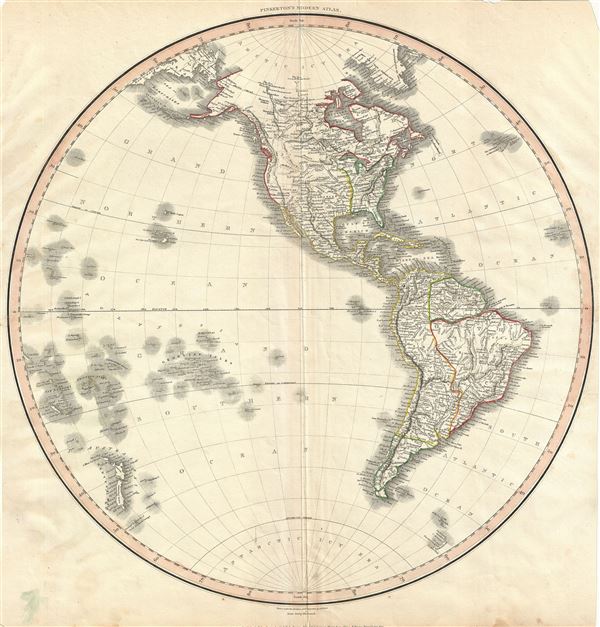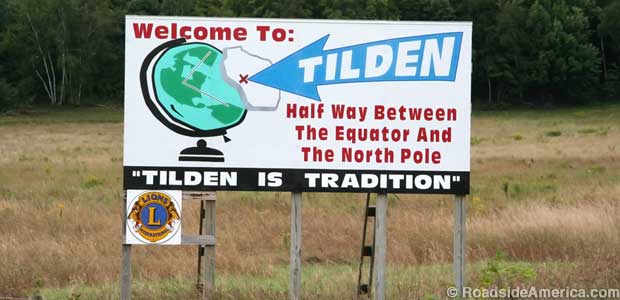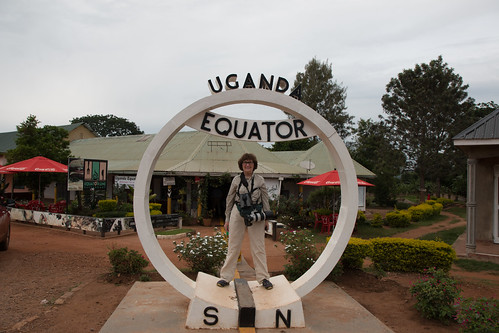In the four decades that Russ and I have lived in Duluth, we’ve driven on Highway 53 in Wisconsin hundreds of times. A couple of hours into the drive, we used to always start looking for the sign that read “Welcome to Tilden, Half Way Between the Equator and the North Pole.”
That sign is no longer there, replaced with something much more boring, but while it was there, it served as a vivid reminder of just where we live on this planet, 144 driving miles north of the 45th Parallel, meaning that Duluth is 288 or so miles closer to the north pole than to the equator.
When I was ostensibly learning geography in elementary school, the north and south poles and the equator were abstractions far beyond any places I could imagine ever visiting, and it stayed that way for decades. It wasn’t until I was almost 50 that I first traveled beyond the United States and a wee bit of Canada. I've made up for lost time at least a little—I’ve stood on the Equator twice, on two different continents: in 2006 in Ecuador,
and in 2016 in Uganda.
The furthest south I’ve ever been was Peru in 2016. Lima, at -12º, is still almost half a world away from the South Pole, and I’m pretty sure I’ll never get any closer, at least not in this lifetime. My dreams of seeing wild penguins ebb with every birthday.
I've done much better in the northern hemisphere. Russ and I took a cruise along the Inside Passage back in 2001, getting almost as far north as 59º N.
(Putting that in a wider perspective, in 2015, our daughter and son-in-law flew with their bicycles to St. Petersburg, Russia, almost at the 60º mark, and they got even further north when they took the train to the western border of Russia and bicycled on their own into and all the way across Finland, Sweden, and Norway.)
Anchorage is above 61ºN but is still over 2,400 miles from the North Pole. The furthest north we’ll get on this trip is Nome. At 64.5ºN, it’s still about 2 degrees south of the Arctic Circle and more than 1,700 miles from the North Pole. That’s a greater straight-line distance than from Duluth to the Pacific Ocean! But I’ve never fancied myself a polar explorer, so that’s plenty good enough for me.
There are orders of magnitude more birds in the tropics than at either pole. I found a paper from 1996 by Vuilleumier listing all the birds that had ever been recorded in and over the Arctic Ocean—a mere 29 species, and not one of them is found only in the arctic. Indeed, in my own life I’ve seen 26 of them, 17 (Snow Goose; Brant; Common Eider; Long-tailed Duck; Pomarine, Parasitic, and Long-tailed Jaegers; Herring, Glaucous, Great Black-backed, Sabine's, and Ivory Gulls; Arctic Tern; Northern Wheatear; White-crowned Sparrow; Lapland Longspur; and Snow Bunting) right here in Duluth, along with a Black-legged Kittiwake just up the shore at Stoney Point and a Ross’s Gull in Ashland. The others I've seen on other coasts and continents.
Of the three truly Arctic species I’ve never seen, the Lesser White-fronted Goose will be pretty much impossible to find on this trip and the Dovekie almost impossible. I’ve got a chance, if I’m lucky, of seeing a Thick-billed Murre—the tour group saw that last year.
Proceeding south from the Arctic Ocean to where our tour will be, the number of birds increases rapidly. Victor Emanuel Nature Tours sent us a checklist of 250 or so possibilities, with optimistic blank spots added at the ends of many families in hopes that we will add at least a few new species to the list.
Not one of the common species would be a lifer, but of the less common birds the group saw last year, 11 would be new for me. The one I most want to see is the beautiful little Bluethroat, a softly colorful bluebird-like species found in wet birch woods and brushy swamps in Europe and Asia, barely reaching westernmost Alaska.
 |
| Bluethroat, by Bogomolov.PL via Wikipedia |
The Bluethroat will be possible only on the Nome part of the trip, as will the Bristle-thighed Curlew, a handsome, medium-sized shorebird with beautifully decurved bill.
 |
| Bristle-thighed Curlew photo from the National Park Service via Wikipedia |
To get that one, we’ll make an arduous hike on the tundra. Another beautiful shorebird, the Bar-tailed Godwit; the Arctic Loon; two ducks (the Spectacled Eider and Stejneger’s Scoter) and another small songbird, the Eastern Yellow Wagtail, are also potential lifers that were seen only on the Nome part of the trip last year.
Birds are hardly the only creatures in Alaska. Russ and I are both eager to see such splendid northern specialties as musk ox, caribou, mountain goats, moose, Dall’s sheep, and (hopefully from a good distance) grizzly bears. In Denali National Park, we’ll be in viewing range of the tallest mountain in North America. The peak of Mount Everest may be almost 9,000 feet higher when measured from sea level, but Denali is almost a mile taller than Everest measured from base to summit. Last year the Victor Emanuel tour group got stunning looks at the peak. We can hardly plan on that—it’s usually shrouded in clouds—but you never know.
Many of the things I hope to see on this trip won’t pan out, but wonderful things I never expected have happened on just about every trip I’ve ever taken. In the moment, each birding adventure is too crowded with fun and excitement to leave room for disappointment. I’m getting months of joy already from eager anticipation, and when we return, I'll savor my photos, sound recordings, bird lists, and memories for many years to come. Not bad for a trip that, technically, will last for just two weeks.





